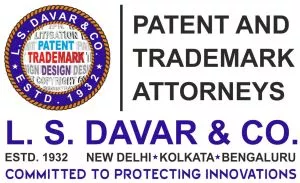In modern world patent regime, due to a great advancement in innovation and technology, the subject matter of claims become more complex. Inadequate understanding of a particular subject matter and absence of clear government regulation undermines legal certainty and has serious implication on the level of intellectual property protection. One such subject matter is computer related invention.
In order to regulate and harmonize the practice with regard to examination of computer related invention (CRI), CGPDTM has issued CRI guidelines in 2013 and revised guidelines in 2017. Not surprising the exclusions under Section 3(k) of the Patents Act, 1970 are backed by legislative intent expressed in Report of the Joint Committee on the Patents (second amendment) with addition of 'Per se' after the term computer program to leave sufficient room to allow patents of Computer based inventions. Hon'ble Delhi High Court via order W.P. (C) 7/2014 & CM APPL. 40736/2019 dated December 12th, 2020 re-iterates this point as follows:
"10. The addition of the terms `per se' in Section 3(k) was a conscious step and the Report of the Joint Committee on the Patents (Second Amendment) Bill, 19991 specifically records the reasons for the addition of this term in the final statute as under:
In the new proposed clause (k) the words "per se" have been inserted. This change has been ... The amendment has been proposed to clarify the purpose."
Last year in a quick turn of events the clouds of uncertainty on type of inventions excluded under the subcategory of Section 3(k), i.e., Computer program per se of the Patents Act, 1970 had been removed by Intellectual Property Appellate Board (IPAB), which is dissolved body now in Ferid Allani patent application for "method and device for accessing information sources and services on the web". The IPAB had allowed the fresh appeal and held the application as patent eligible. [OA/17/2020/PT/DEL] Earlier setting aside the refusal order in a writ petition, Delhi High court remanded the matter for reconsideration by Controller with categorical direction to examine the invention as a whole and the patent application deserves to be considered in the context of settled judicial precedents which have now laid down the interpretation of Section 3(k), the Guidelines and other material including the legislative material. Delhi High Court also held that patentability of a patent invention is tested on the fulcrum of "technical effect" and "technical contribution". If the invention demonstrates a "technical effect" or a "technical contribution" it is patentable even though it may be based on a computer program. [W.P. (C) 7/2014 & CM APPL. 40736/2019 dated December 12th, 2020]
Even IBAB via order OA/17/2020/PT/DEL delineated the importance of inclusion of the word "Per Se" and acknowledged that the genuine invention which has been emerged with the contribution of computer program should not be denied. These observations clearly differentiate between the term 'computer program' and 'computer program per se' and therefore the program which adds significant contribution in enhancing a particular technology should not be unnecessary stretched to cover every aspect of program under the exclusion. For example, an invention directed to provide automatic lip synchronization and expression to an animation character with the help of computer program should be patent eligible because the invention provides a significant improvement in the computer technology.
When the above Ferid Allani patent application was remanded back to the Controller by Delhi High Court via order W.P. (C) 7/2014 & CM APPL. 40736/2019 dated December 12th, 2020, the Controller examined and refused the application on ground of Section 2(1)(j) and Section 3(k). When the said order was challenged before the IPAB, the IPAB reaffirmed the 'technical effect' and 'technical contribution' test as laid down by the Delhi High Court and held that the important consideration which examiner should look while examining computer related invention is whether the underlying substance of the claim produces any technical effect and technical contribution in a particular technology irrespective of the fact that computer program has been used to implement a part of the invention. In other words, it can be concluded that the IPAB highlights the importance of other elements present in the claim in addition to the computer program.
Para 39 of the Order OA/17/2020/PT/DEL " ... Therefore, without appreciating the technical effect produced by the present invention, as elucidated above, the mere fact that a computer program is used for effectuating a part of the present invention, does not provide a bar to patentability. Thus, the invention MUST be examined as whole and the following factors are to be considered while deciding upon the patentability of such inventions – i.e (i) technical effect achieved by it, and its (ii) technical contribution."
Interestingly, IPAB in the same order considered Computer Related Invention guidelines, 2013 to list out some example of technical effect such as Higher speed, Reduced hard-disk access time, More economical use of memory, More efficient data base search strategy, More effective data compression techniques, Improved user interface, Better control of robotic arm, Improved reception/transmission of a radio signal etc. Further, revised CRI guidelines, 2017 on examination of computer related invention envisage to consider i) substance of the claims, and ii). the claim as a whole while examining the patent eligibility of claimed subject matter. The corollary of which would be that even if a computer program is used for effectuating a part of the present invention, it would not bar the patentability of the claimed invention as long as it provides a technical effect and has a technical contribution. Thus, dissecting a claim into two parts, ignoring the contribution of the computer program which brings technical effect is not advisable while considering CRI inventions patentability under Section 3(k). This IPAB order now streamlines examination consideration to stress on the looking into subject matter as a whole on the fulcrum of technical effect and technical contribution while examining a computer related invention.
Justification for patentability of computer program which is beyond 'per se':
From above, it is clear that the legislative intent with regard to patentability of computer program was to proscribe those computer programs which are 'per se' computer program. In one approach computer program can be seen as combination of literary art which is copyrightable and some functional elements of technical nature. Though, filtration of copyrightable art from the whole computer program is a difficult proposition, however if achieved, the output will be those part of computer program i.e., functional element having technical nature. Now, if this filtered functional element brings "further technical effect" i.e., beyond the normal technical effect which is achieved by the normal interaction of computer program with associated hardware, then this part of computer program is beyond computer program 'per se' and deserves patent protection. So, the justification for patentability of computer program lies in its ability to bring "further technical effect" in any computer related invention.
Conclusion:
The above discussed order has certainly to some extent cleared the mist of uncertainty surrounding the patent eligibility of computer programs related inventions. We have also experienced that the Ferid Allani order of IPAB has positive impact during a hearing process before Controllers of Patents. Now, software developers can see a silverline of the possibility of obtaining patents on inventions based on computer programs that reach beyond mere software preparation. The Courts in India are alive to the recent developments in a technology and legislative intent to allow the patents on such inventions.
The content of this article is intended to provide a general guide to the subject matter. Specialist advice should be sought about your specific circumstances.


